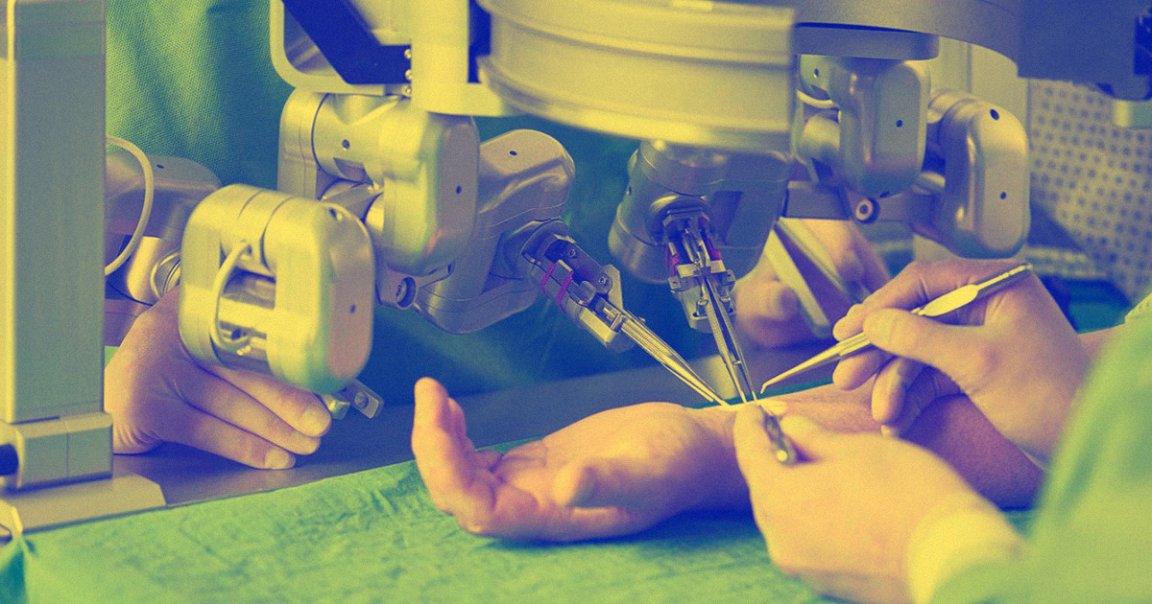
Try to move your hand just a single millimeter.
Guess what? You probably overshot your target. Good thing you’re not a supermicrosurgeon, who operate on vessels sized 0.2 to 0.8 millimeters in diameter. If this sounds like a rare feat of daring, it is: Only a handful of the world’s best doctors can pull it off.
That’s why it’s extraordinary that a Dutch robotics system just aced the world’s first successful robot-assisted microsurgery on a human.
Per a paper published Tuesday in medical journal Nature Communications, they pulled off the first robotics-assisted microsurgery using a dedicated microsurgical robotic apparatus. It concluded:
“Our data provide the first-in-human proof that robot-assisted supermicrosurgical LVA in patients suffering from BCRL is in fact feasible and safe using the MUSA.”
Manufactured by Dutch company Microsure, MUSA’s operated by doctors using forceps-style joysticks mounted on a surgical table, as well as foot pedals.
What makes MUSA different from other robot-assisted surgical devices like the DaVinci system — which, per MIT Tech Review, is the most successful surgery robot out there — is that it can go where DaVinci can’t: surgical targets under a single millimeter. It could pull off feats including:
(A) Canceling out human hand “tremors” which, in a surgery involving a target that small, is — as you learned at the start of this article — effectively any non-deliberate hand movement whatsoever, to say nothing of most the world’s deliberate hand movements, and
(B) Scaling the controls out of proportion to one-for-one human movements. Instead of a centimeter movement on a joystick resulting in a centimeter movement by the robotics, it results in a fractional sub-millimeter movement.
MUSA helped doctors operate on a patient with a condition related to breast cancer called lymphedema, which affects just under a third of breast cancer survivors in the two years following initial breast-cancer related surgeries.
The study confirming the robot’s efficacy showed that patients who went through the MUSA-assisted supermicrosurgery had markedly improved outcomes over sans-robot supermicrosurgeries — in other words, they healed more quickly.
There’s no firm price on the system right now, and given that the closest system to MUSA (the DaVinci which, again, can operate only down to a single millimeter) runs a cool $2 mil, don’t expect to see it in your local hospital any time soon.
But what you can expect to see soon is more news of trials like this, employing MUSA, and the kind of technological development that will allow for wider adoption of it and systems parallel to it. Consider: the DaVinci robot showed up in 2000. Only twenty years later, and we’ve managed to shrink its precision to under a millimeter. MUSA, as a measurement, is more than a revolution for surgery — it’s also just another step.